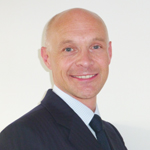 Guest post by Nathan Baker, Director of Engineering Knowledge, Institution of Civil Engineers
Guest post by Nathan Baker, Director of Engineering Knowledge, Institution of Civil Engineers
The Institution of Civil Engineers (ICE) wants to help professionals, particularly women who have taken a career break, return to work and come back to civil engineering.
Barriers to work
We recognise that many people struggle to find the right opportunities to return to engineering after having children, taking a career break to travel or simply having tried a role in something else.
If this sounds familiar and you, or someone you know are worried your skills have depreciated or that the sector you once knew has moved on, ICE want to help.
The Civils Comeback scheme aims to help rebuild your confidence, networks, skills and knowledge base. We want to bring professionals back to civil engineering, and have put together a programme of resources and opportunities to help.
Why come back to civil engineering?
There has never been a better time to come back to civil engineering. It is projected that we will need an extra 1.82 million people with engineering skills up to 2022.
Simply put, we need more people with engineering skills in the short, medium and long term. There are opportunities available, and we want to point you in the right direction.
Impact of the skills shortage
The STEM skills shortage in the UK is complicating the ability of firms to meet the rising demand in construction. It is widely accepted that we face an impending skills crisis, with significant consequences, including:
- Industry competence to deliver quality products or services may be lost
- Costs and inflationary pressures may escalate, placing further stress on budgets and large-scale planning
- Major projects may be postponed or cancelled as no longer financially viable, resulting in the loss of UK plc competitive advantage in the global marketplace
Professor John Perkins’ Review of Engineering Skills (2013) identified that engineering skills take a long time to develop, particularly when you take account of the time needed to develop the academic foundations of engineering by studying maths and science in school.
In the short term, we can improve supply by investing in retaining those with engineering skills and encouraging them to return if they have left the profession or taken a career break. Building on this recommendation, we want to get more people back into work as a civil engineer.
More importantly however, we cannot deny that there is a historic gender imbalance in the engineering profession. This is a reputation we want and need to shed and ICE is committed to taking positive steps to resolve this.
We need a strong and diverse workforce to build the essential infrastructure society depends on.
What is ICE offering?
ICE has created an online resource offering which includes:
- Information and access to work-placements with sponsoring organisations
- Support through the ICE Benevolent Fund’s coaching scheme to provide the tools needed to get come back to engineering
- Use of our online career-planning resources to help identify the right area(s) of civil engineering for you
- Access to knowledge resources and networking events
- Access to ICE’s informal mentoring service with over a hundred experienced civil engineers offering support and guidance
How to find out more
To find out more, please visit www.ice.org.uk/civilscomeback. Or for an informal chat, contact Adam Kirkup on 020 7665 2262 or adam.kirkup@ice.org.uk.



